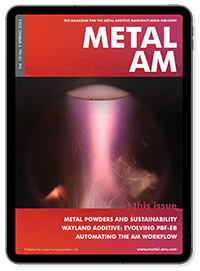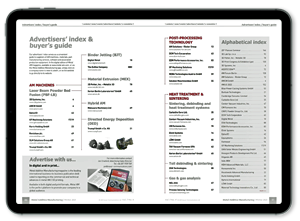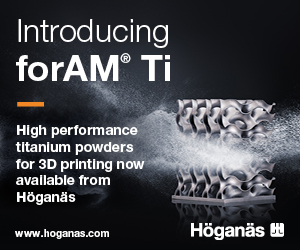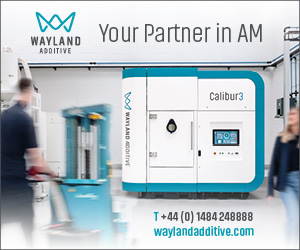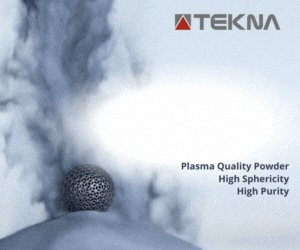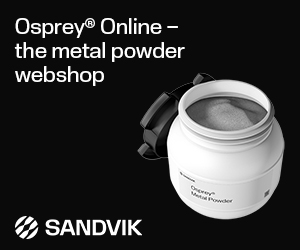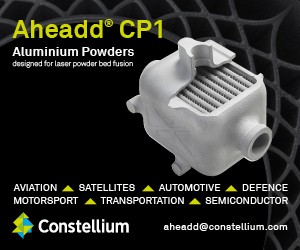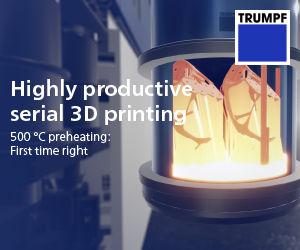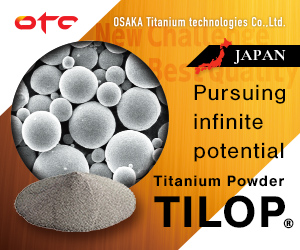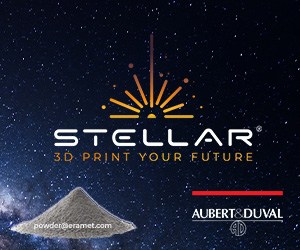Velo3D helps to lay groundwork for industrial AM in Oil & Gas sector
October 6, 2021
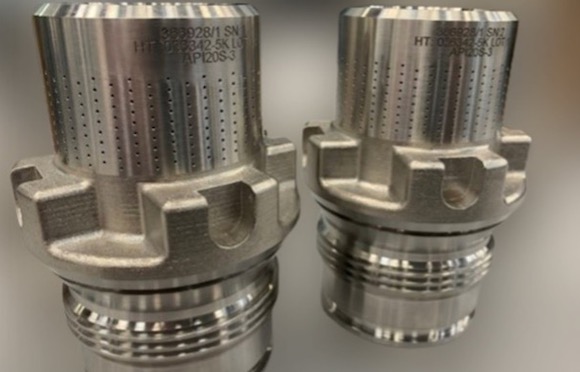
Velo3D, Inc, Campbell, California, USA, has been providing advanced Additive Manufacturing technology to IMI Critical, a company that designs, manufactures and installs customised, highly-engineered flow control solutions for new oil & gas plant builds, and provides comprehensive plant lifecycle service support.
In a partnership with a major O&G operator – also an API committee member – IMI Critical has now delivered the highest criticality (Additive Manufacturing Specification Level 3; AMSL 3), first-article component builds intended for field service. The parts were additively manufactured on a Velo3D Sapphire AM machine operated by contract manufacturer Knust-Godwin.
The parts also meet the specification API20S requirements, said to be the first O&G-industry sanctioned specification for metal AM. Released in October, this standard spells out processes, testing, documentation, and traceability – among other requirements – for manufacturers of metal AM components being used in O&G facilities of all types.
The API20S was published with input from hundreds of companies, ranging from operators to OEMs to AM machine manufacturers. While not detailing complete success criteria (i.e., required mechanical or non-destructive testing acceptance criteria), API20S does outline what kinds of testing and validation will be required depending on different risk levels within an O&G operation.
Increasingly, and aided by the proposed adoption of the above standards, oil & gas operators have become open to considering metal Additive Manufacturing as a potential solution to the industry’s traditional problems – namely, the quick and reliable manufacturing of key parts for use at remote locations. Unsurprisingly, industry OEMs are also looking to AM as they evolve along with their operator-customers to achieve more efficient, cost-effective solutions that address ongoing inventory and geographic roadblocks.
Steve Freitas, R&D Director, IMI Critical, has stated the company is among those welcoming the guidelines enthusiastically, as it began looking at different systems for additively manufacturing of valves several years ago, and only recently identified the advanced AM technology suitable for its needs. Velo3D was the company chosen to fulfil these needs based on key features of its machines – namely, automated pre-build system calibration and in-situ quality monitoring & reporting, abilities upon which many API20S objectives are based. The long-term goal of the joint project is to build up a compendium of measured field data that are intended to support the path towards certification of production parts for AM, as well as the future establishment of more exact specifications for material properties and test methods.
For the team project, the O&G operator selected a commonly installed choke valve cage. The part had been manufactured with simple slotted holes for ports, which can have problems with vibration and damage due to trim erosion in high-pressure-drop operations.
The flow-control industry has evolved considerably between the time this legacy part was created and today. One step in its evolution is IMI Critical’s technology DRAG®, which consists of an array of discrete, multi-stage flow paths that better control fluid velocity and prevent problems with vibration and trim erosion. IMI Critical, having produced metal AM components for years, saw a business opportunity to not only replace a part on-demand, but also to improve its performance with DRAG. The next step in the project was to assess the new design for AM out of Inconel 718.
“Velo3D’s early review of our cage design produced valuable recommendations on how to improve the quality of both the as-built AM part and the final, post-processed machined part,” stated Freitas.
Preparation
With the CAD design for the part complete, it was now time to move to Additive Manufacturing. Velo3D’s Flow manufacture-preparation software automatically responds to a part’s geometry without any complex part-specific parameter development. Flow does this by applying a generalised set of recipes based on the design’s native CAD geometry and user-defined inputs relating to surfaces of importance. This allows design engineers to focus on their desired end-part functionality above all, without the need for complex, pre-build parameter manipulation.
The designer can also use the software to apply and test different surface-refining sub-processes to choose the best one. This not only resulted in a quick transition into the first-article section of the project, but it also created a standardised framework which was said to further simplify the set up of future builds to meet IMI Critical’s specific surface finish and flow characteristic requirements.
“Flow greatly reduces the initial setup time from CAD to print file,” stated Zach Walton, Director of Energy Solutions, Velo3D, who worked closely on the project with IMI Critical. “This opens up the ability for design and manufacturing engineers to more easily and efficiently implement metal AM printing. At the same time, our system’s ability to print the same build file on any Velo Sapphire machine, no matter where it is in the world or who is operating it, was very appealing to the O&G operator’s vision for digital inventories and direct part replacement.”
Quality control and reproducibility, anywhere
With API20S requirements in mind during the project, the automation provided by Velo3D’s internal quality-control software, Assure, was highly beneficial.
Walton stated, “Following one-click calibration before a build, Assure compiles that data along with a tremendous amount of information collected throughout the build, layer by layer, then automatically generates a build report containing the information of importance.”
“The raw data and height-mapper images were also useful for evaluating and assessing critical areas of the part for future production,” he continued. “In conjunction with the Flow pre-print software, this allows for this same print file to be printed on any VELO3D system no matter who is operating it or where it is in the world – with the same expected end-part quality. These capabilities of advanced AM now make digital warehousing and on-demand part replacement achievable.”
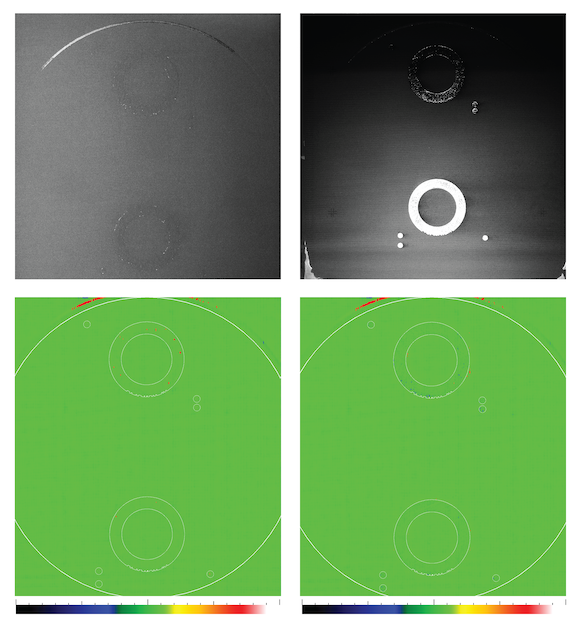
This knowledge provides tangible support for the development of more robust supply chains as O&G operations start leveraging metal AM for the replacement or improvement of legacy parts.
“Now we can help our customers reduce inventory requirements while providing opportunities to optimise both the functional characteristics and the materials of critical process control components,” Freitas added. “This allows O&G operators to shift their focus away from repair and part supply chain problems and concentrate on improving plant reliability and controlling costs.”
The two First Article choke valve components were successfully additively manufactured at the Knust Godwin facility. From there, the valves were removed from the build plate along with the API20S test specimens. The valves were then machined to the final finish, while specimens were tested in accordance with API20S, which showed compliance to IMI Critical’s materials specification.
The valves were then flow tested at IMI Critical before being delivered to the O&G operator for use in upcoming field trials.
Freitas stated, “This was the first production valve produced using Velo3D technology and the flow test results were a profound demonstration of the consistency of the generalised processes provided by Flow software.”
IMI Critical reports that operators whose legacy OEMs can no longer replace ageing designs are becoming more open to technologies like AM and DRAG – but they are also demanding those new parts as quickly as possible.
“Here’s where AM can dramatically change the picture,” adds Walton. “By using it to deliver DRAG-optimised parts in less time than traditional manufacturing methods, IMI Critical can provide its customers with significantly shorter lead times and a much-simplified supply chain.”
With initial testing and analysis already deemed successful, these versions are in transit to be run in the field by the O&G operator. Production builds are currently ongoing, leveraging the manufacturing plan established during the First Article build. Additional field testing will also be performed to collect more operational data. The result will be production-ready components, adhering to current API20S objectives, that will be put through real-world field trials at one of the operator’s sites.
The next steps
Following installation and testing of the new choke valve cages in the field location, there will be publication and presentation of results. Going forward, IMI Critical intends to further implement Velo3D’s technology for the manufacture of additional trim valves and other types of components.
“The ability for metal AM to deliver highly customised parts from robust metal alloys, in far less time than the traditional supply chain, is a benefit that we have been offering to our customers for some time. The unique abilities of Velo3D’s next-generation technologies will allow us to minimise the re-design of our products for additive while also reducing the barriers associated with traditional metal additive systems on the build setup, maintenance and supply chain scalability,” Freitas stated.
Further advantages from the use of advanced AM may accrue to IMI Critical’s own design exploration work, due to Velo3D’s ability to manufacture internal channels and overhangs at well below 45° angles (even down to zero, in the case of IMI Critical’s DRAG technology). This is hoped to enhance the application of DRAG to optimise legacy designs and simplify workflows.
IMI Critical is also planning to leverage the bigger-build platform of Velo3D’s XC AM system for larger-size flow control elements, or greater volumes of smaller ones.
Freitas concluded, “We are looking forward to continuing our teamwork with VELO3D to produce additional components for O&G and to apply their large build-size capacity to manufacture very big valve components for both the Oil & Gas and the fossil power markets.”




